 “Nothing is more obstinate than a fashionable consensus.”
“Nothing is more obstinate than a fashionable consensus.”
“Consensus: “The process of abandoning all beliefs, principles, values, and policies in search of something in which no one believes, but to which no one objects; the process of avoiding the very issues that have to be solved, merely because you cannot get agreement on the way ahead. What great cause would have been fought and won under the banner: ‘I stand for consensus?”
Before getting into details, some very basic questions on the topic answered briefly:
1- Who are the chief actors?
- Pro AGW actors will herein be known as ‘alarmists.’
- Con AGW actors will herein be known as ‘doubters.’ ‘Deniers’ is seen as derogatory and has been replaced in the mainstream media (MSM.) Skeptics is still prefered by some.
2- Is the global climate changing?
Yes. It always has and it will continue to do so. This is why there have been ice ages.
3- Is this change due to human activity?
No. (see question 4, below) The sun is the primary determinant of climate as this is where the planet gets almost all its energy.
4- Does human activity contribute to warming or cooling trends?
Otherwise stated, is anthropogenic global warming or anthropogenic climate change (AGW or AGCC) a legitimate concept? On the face of it, probably not, but if it is, the effect is truly minimal. The rub here is whether or not we consider geo-engineering (besides a slight mention, geo-engineering is not a substantial part of this article) as part of this equation? If so, the effect would be to increase the amount of influence man has on his environment, although very slightly. In which direction, though, is still not known.
5- Is CO2 pollution or plant food?
CO2 is most definitely not pollution by any definition of the word. Conflation between carbon monoxide (CO – which is pollution) and carbon dioxide (CO2 – which is plant food) and basic scientific ignorance seem to be at fault here. See this article for disambiguation.
6- Does the economy have an effect on the science?
Just as with politics, when money is introduced into a problem, it tends to aggravate the situation by bringing up new problems. The economy affects everything. Governments need revenue to fund research and address issues. Corporations need investors in order to continue doing business. Universities and think-tanks need government (and private) money to continue their research. Magazines, journals, and publishing houses need advertising revenue to continue to publish. Scientists need money to support their families. There are many points along this chain in which to introduce money as a corruptive factor. Money can indeed influence science, and has.
7- Does politics control policy, or do the facts?
It would seem that there is an agenda at work behind the question. The IPCC (the UN’s main deliberative body on climate change) was, at its inception, created with a mandate. The IPCC is a political body and not a scientific one and was created with specific goals and objectives to attain. Their own literature attests to this fact. Scientists who participate with the IPCC do so as consultants and advisors only. Motions put forth by the UN are written by lawyers, bureaucrats, translators, and policy-makers, not scientists.
8- Is there bias in the debate?
Both sides of this question are subject to biases (scroll down to the comments section where professor Brown references these biases) when reporting on the data. Everybody who works in this field has a horse in the race, so to speak, and everybody wants their horse to come out ahead. However, there are several documented instances of outright fraud concerning manipulated data which all seem to come from one side of the table in particular – the alarmist side. (More on this later) And yes, many people on the internet lie or are mis-informed, on both sides.
9- How much carbon dioxide is there in our atmosphere?
400 ppm = 0.04% That is to say that four one-hundredths of one percent of our atmosphere is composed of carbon dioxide.
Some basic facts about CO2 concentrations:
- 70,000-100,000 ppm (unconsciousness within an hour)
- 7000-8000 ppm (earth’s historic high)
- 5000 ppm (US Occupational CO2 exposure limits – 8 hrs.)
- 3000-4000 ppm (poorly ventilated indoor spaces)
- 2000-2500 ppm (well ventilated indoor spaces)
- 2000-2500 ppm (Jurassic era levels)
- 800-4000 ppm (optimal greenhouse targets)
- 360 – 410 ppm (earth’s atmosphere today)
- 250 ppm (earth’s historic low)
- 200 ppm (IPCC target level)
- 150 ppm (level under which plants start to die)
- 0 ppm (where Bill Gates wants it)
If you only click one link in this entire article, make it the following:
Chistopher Monckton Keynote – ICCC9 July 9, 2014 (47:11)
Start at the 20:00 mark if you don’t have much time. In this video, Lord Christopher Monckton lays bare the language of the agreements reached at several climate summits demonstrating the true intent behind these schemes. He then goes on to suggest some very positive actions which we all can take in order to guarantee legitimacy and transparency in these international tribunals governed by non-elected bodies accountable only to their own interests. With the COP-21 United Nations Conference on Climate Change in Paris quickly upon us (November 30 to December 11, 2015) there is precious little time to act.
Let’s put an end to global warming.
The topics addressed herein have been ‘debated’ for years, and although this article is not exhaustive, it tries to explain the facts of the matter in a succinct and accurate way. Much of the language of climate science is technical; this attempt at clarification tries to make it easier to understand while still retaining the overall details necessary to a meaningful argument.
n.b.- Where ‘climate’ is used, ‘global climate’ is implied.
‘ppm’ indicates parts per million by volume.
‘Sinks’ refer to natural systems which are net absorbers of carbon, and ‘sources’ refer to those that are net producers of it. Forcings are variables which affect specific measurements.
Links to videos will be proceeded by the length of the video – e.g. Video (1:23:45) h:m:s
If only it were as simple as just the science behind the facts. Politics has a nasty habit of sneaking in where it doesn’t belong. The problem with the entire environmental movement is not one of science, it is not one of consensus, it is not even one of truth, and has precious little to do with conservation, preservation, or education; the entire issue can be summed up in one word: governance. The opposing climate change arguments (it isn’t really a debate) can be seen as science on the left and governance on the right. Governance touches on the role of the UN, national sovereignty, and basic human rights and freedoms.
The recent developments in the realm of climate science have a long history. The middle ages saw environmental concerns arise from the burning of sea-coal and the noticeable effect it had on air quality. King Edward I of England actually enacted laws to combat the problem. The Industrial revolution was responsible for creating the ‘pea soup’ smog common in London. Buildings were discoloured and breathing problems were widely reported. Clearly, something needed to be done, and was.
Later on, in the late twentieth century, there was much talk about entering a new ice age. Global cooling was the ‘mot du jour.’ When an increase in average temperature was noticed, the dialogue quickly shifted to global warming. The term ‘global warming’ had its problems, too. When the warming trend flattened, the term ‘climate change’ was substituted. Indeed, there has been no noticeable warming in the past eighteen+ years and predictions are now calling for a period of gradual cooling. Kooky!
Even the charts above are from many of the same alarmists who brought you ‘Climategate.’ More on that later.
Climate is an enormous subject. There are so many variables which go into making the weather that even listing them all is impossible. The time scales involved are vast. This has the effect of making weather prediction (greater than 72 hours ahead) a tenuous scientific exercise, at best. Predicting long-term weather patterns (52:10) and climatic trends is dubious. This tenet is best stated by the IPCC itself, to wit:
“In climate research and modelling [sic], we should recognize that we are dealing with a coupled non-linear chaotic system, and therefore that long-term prediction of future climate states is not possible.” The Intergovernmental Panel on Climate Change (IPCC) Third Assessment Report (2001), Section 14.2.2.2, page 774
More on this shortly.
The previous statement lays the foundation for all subsequent discussion on the topic of alarmism and where catastrophic consequences for the planet are being predicted projected. This is precisely why the IPCC needed to form a ‘consensus’ of scientists, even though science does not work through consensus but through repeated measurement, instead. The 97% consensus (5:57) argument is flawed (and has been debunked) for several reasons. First, the question used to interrogate scientists was deceptive. It asked whether or not humans may have some influence on global temperature. Clearly, even doubter scientists were made part of this statistic. Second, data on scientific peer-reviewed papers was improperly tallied; most of the peer-reviewed literature on the subject shows that 95%+ of the papers did not subscribe to catastrophic AGW. Third, the peer-review process (in general but in this case particularly) can be shown to be flawed and subject to bias and corruption.
Going back to the subject of modeling (using computer algorithms to calculate the probabilities of certain outcomes given a set of parameters and/or variables,) there are many problems when computer models are employed. An old saying with computer programmers is ‘garbage in, garbage out.’ This simply states that the information one gets from running models is only as good as the information one puts in. Given that there are so many variables which contribute to global climate, and that many of them are still not known, the results which can be expected should not be considered accurate or complete, by any standard. There are many other problems with models (and charts and graphs,) such as partial derivatives, smoothing of lines, determining averages, and resolution or sample size and distribution. Dr. Christopher Essex gives an excellent lecture in which he clarifies these potential errors (52:09.) These are just some of the reasons that all of the IPCC’s models have, so far, been so very far off the mark. There are many others.
Basing such crucial decisions as imposing new taxes, limiting technological growth of emerging market countries and imposing upon them enormous costs, changing the basic infrastructure of global energy requirements, and imposing new systems of global governance on such shoddy evidence should be viewed critically. Doing so knowingly is nothing less than fraudulent.
Funding has been a hot-button topic lately, especially where doubters get theirs. Willie Soon has been at the center of this controversy because he has participated in research projects for the oil industry without full disclosure. This fact does not mean he is bad at what he does, namely solar science. (Click on the following link for an article showcasing ad hominem attacks, and many other forms of rhetoric. ) The fact is that most researchers do not have the luxury of being too picky about who they do their work for. *Q: What’s the difference between a PhD in mathematics and a large pizza? A: A large pizza can feed a family of four.* This clichéd old joke is a perfect example. But the amount allegedly spent on the skeptics’ side by the fossil fuel industry is but a drop in the carbon bucket. Many magnitudes more have been spent by alarmists and the banking industry over the question of carbon credits. Whereas millions have been spent on the skeptic side, many hundreds of billions have been spent by the alarmist side in the multi-trillion dollar carbon market.
Another point to be made here is that scientists, like anyone else (you, the reader, are invited to count yourselves amongst this group,) should be free to change their opinions when facts determine it. Science can be a very focused discipline, and many lose sight of the big picture when studying a small aspect of it. This does not mean the scientists are wrong. Many climate scientists have, in fact, jumped ship away from the alarmists when they properly looked into the facts of this matter. A good example can be found with the ‘Right Climate Stuff‘ group, a team of NASA employees who have taken it upon themselves to review the facts of climate change. The team includes respected scientists such as Dr. Roy Spencer (7:34) and Dr. Hal Doiron (1:13:45.)
Marginalization is a very useful tactic when the disingenuous position of consensus puts anyone who disagrees far into the minority. Many bodies politic, such as the church and many governments, would disagree, but their use of and purpose behind science has been very different than that of the researchers themselves. The scientific papers are written (usually very dryly) by those closest to the facts. The papers used to present these arguments to those who control policy are written by lawyers and bureaucrats who do not understand the science which underpins them. Policy, therefore, can be easily manipulated through sophistry to state anything that the pre-determined agenda needs to reflect. This is the basis for the foundation of the IPCC. Guilt is also a weapon of choice. We seem not to have a problem shaming people into cleaning up the world for the sake of our grand-children even as we saddle them with un-payable debts, austerity, and reduced personal freedoms. As an interesting side-note, it would appear that the great majority of data which is brought forth in this debate is done so by doubters. Alarmists rarely supply data, instead relying upon fear and the techniques of sophistry to get their (disingenuous) point across. If science really is on their side, why must they resort to using such deceptive and duplicitous tactics in the first place? Why is there any need for fraud?
Many instances of deliberate manipulation of data can be found within the topic of climate change. Graphs have been smoothed, and data has been left off (see the hockey-stick chart for an example.) Cherry-picking data as well as selecting ‘useful’ starting points for many graphs have led to erroneous assumptions by the lay-reader. Entire movies have been made by otherwise reputable people which contain no good science whatsoever, yet claim science as the foundation thereof and have continued through the urban legend stage of disseminating bad information to a majority of viewers who have no other means of discerning that which is true from that which is utterly fabricated. The movie in question is “An Inconvenient Truth” by Al Gore. As with the IPCC and its models, none of the dire predictions made in that abhorrent piece of mis-information have come to pass. However, people still continue to quote it and pass it off as truth. It is better described as propaganda. But propaganda has a purpose in its message; it has a goal in sight. What is the goal of scaring millions of people into thinking that something which is not happening, is? More on this later.
The above chart is what passes for climate science these days. The last hundred million years is equated to the next forty years in ‘projected’ temperature rise. The future curve claims that doubling carbon dioxide will lead to an exponential increase in temperature without taking into consideration the inverse proportion of forcing. This entire graph is arbitrary, as demonstrated by the suspect question mark. If the values are unknown, why does the graph trend upwards? Why does it continue at all?
Much has been written about climategate, and particulary about Michael E. Mann. He claimed to have been a Nobel prize winner, although he was not. His Wikipedia page strangely does not prominently highlight the controversy of his career as do most of the pages for doubters deniers. It seems to overtly laud his accomplishments including the fact that he came up with the hockey stick graph, which has been debunked many, many times now.
Here is the graph as it was presented to the world in, amongst other pieces of dis-information, Al Gore’s movie, “An Inconvenient Truth.”
Here is the graph as it should have been presented, based on the raw data.
Here is how he manipulated the data (4:58.)
The email scandal and other controversies involving Mr. Mann will be left to the reader to look into. It would not be appropriate to in any way further his disastrous career, or bring any undeserved attention to his findings (read: failings.)
If their facts are so unassailable and their data is so sound, why would they need to resort to such duplicitous tactics. If they really did have facts on their side, they wouldn’t need these ‘tricks.’ This subterfuge does a dis-service to the truth.
However, most of the world still thinks his data is sound because they saw it in a movie. Unfortunately, when science goes up against Hollywood, Hollywood usually wins. Perhaps the Mythbusters should have a go at this. Somehow, it seems doubtful that they ever would. Vincent Courtillot (25:18) did, however, and what he found contradicts the Hadley conclusions (in French.)
Correlation is not causation. Any stock market analyst will say this. Just because we happened to have developed such technologies as the internal combustion engine during a time of increasing global temperatures does not mean that the two are related. The data on this concurs. Besides, even the notion of increasing temperatures can be called into question. Many of the surface temperature measurment stations which showed recent colder temperatures have been de-commissioned, and many of those which are still active are subject to the ‘heat island effect.’ This has the net effect of increasing the global average surface temperature. Incidentally, the average global temperature is not even a searchable statistic. There is, apparently, no such thing.
“One reason is that there are several different techniques for coming up with a global average, depending on how one accounts for temperatures above the data-sparse oceans and other poorly sampled regions. Since there is no universally accepted definition for Earth’s average temperature, several different groups around the world use slightly different methods for tracking the global average over time… The important point is that the trends that emerge from year to year and decade to decade are remarkably similar—more so than the averages themselves. This is why global warming is usually described in terms of anomalies (variations above and below the average for a baseline set of years) rather than in absolute temperature.”
Besides the missing data and other anomalies, there are other factors which falsely induce people to believe that recent years have been the warmest ever. For one, all of the temperatures during the last 18+ years have been within the margin of error for the calculations. Any one of these years could have been chosen to be the warmest (3:09.) As a matter of course, the most recent has always been chosen to hold that distinguished title. The truth is that even the biased surface temperature data has not shown any warming over the last 18+ years; it has plateau’d despite ever-rising levels of carbon dioxide. The IPCC has no explanation for this phenomenon.
Some of the charts used, when showcasing global temperature increases, are American surface temperature data charts. Besides containing local and not global data, the charts often don’t mention satellite data which tends to be more accrate. This is another form of fudging the data to fit the policy rather than crafting the policy to fit the data.
If one does not believe that the sun is the primary mover of energy in this solar system, consider the increased incidents of skin cancer, the UV protection offered by sunglasses, and the rising spf levels of sunscreens, not to mention the many recorded instances of wildlife going blind. This adds another dimension to the global warming debate, namely ozone. How does ozone affect global warming? Although there has not been much research in this area, the preliminary conclusions are that it does not significantly contribute (the effects of ozone high in the atmosphere tend to cancel the opposite effects of ozone in the lower atmosphere.) The figure on this page is telling, however. It shows the relative importance in the change of abundance of atmospheric gases (but does not provide any measurement of atmospheric concentrations – as most people would take away from it) and implies that carbon dioxide is a much greater contributor to global warming than is ozone (this is a dubious claim as will be demonstrated later.) But what does it not show? It does not show the effect that atmospheric water vapour has. Water vapour is undeniably and unanimously regarded as the most significant forcing agent in the earth’s atmosphere, yet it is never mentioned on any of NOAA’s or NASA’s charts and graphs. The reason is because, if drawn to scale, the enormous effect of water vapour would render the rest of the chart unreadably small. The proof can be found in experiments which are being undertaken by both NASA (with satellites) and CERN (with a cloud chamber) measuring and modeling aerosols, particulate matter, and clouds (water vapour) in the atmosphere, both real and simulated. The budgets attributed to this field of study are, quite literally, astronomical.
Carbon dioxide outgassing has been explored as a way to terra-form Mars. This very clearly demonstrates that increased temperatures cause increased levels of carbon dioxide, and not the reverse. Carbon dioxide is a very weak forcing agent, whereas methane is about 25x as potent.
“…raising the temperature in an atmosphere increases the vapor temperature of CO2 meaning that more solid CO2 will then evaporate from polar and global regolith (Zubrin, 1996). If the polar and global regolith hold CO2, raising the atmospheric temperature by only 4K (i.e. with greenhouse gases [Ed.- methane] or an orbiting mirror [Ed.- reverse geo-engineering]) ultimately leads to an increase in the amount of CO2 outgassed… (Zubrin & McKay, 1997).”
Outgassing is an important concept when one considers that a one degree rise in global temperatures would outgas 600 Gigatonnes of carbon dioxide from a depth of 30 metres in all the oceans. This represents almost all of the atmospheric content.
An increase in carbon dioxide would help build up the atmosphere which would then, in turn, heat the planet. But this is on a planet with no atmosphere at all, so the effects of any greenhouse agent would by magnified. Nevertheless, once plants could take hold, they would need high levels of carbon dioxide in the atmosphere simply to survive. Plants on Earth start to die when carbon dioxide levels dip below 150ppm.
This fact begs the question of why Bill Gates wants carbon dioxide levels at zero (27:42.) What he says between 3:53 and 4:26 is alarming.
“Probably one of these numbers is gonna’ hafta’ get pretty near to zero.” Well for the equation to equal zero on the left, only one value on the right can make this work: population (P) because people (and animals) exhale carbon dioxide. If we assume that this is not what he meant, the only other variable which could bring carbon dioxide ‘near’ zero would be Carbon per unit energy (C.) However, this assumes absolutely no oil, gas, coal, or wood burning anywhere in the world. This would mean replacing 93% of the energy resources used today. The only way to do that would be nuclear. Thorium salts, anyone?
But what he says between 4:30 and 4:46 is truly abhorrent.
Speaking about the population reaching nine billion, “Now if we do a really good job on vaccines, health care, and reproductive health services, we could lower that by perhaps ten or fifteen per cent.”
He is very clearly talking about mandating medical intervention in some of the poorest regions in the world in order to control their populations, like a herd. Not many people know this, but his father was a noted eugenicist and the head of Planned Parenthood. Gates himself espoused Malthusian beliefs, and though he says his views have changed, his actions would indicate otherwise.
The above is mentioned here because this is the discourse which people are using to determine policy in the climate saga. Influential people at the top of society are using their position to formulate the plans for us all.
It is notable that a great number of climate alarmists also happen to be proponents of population reduction.
We do not need GMO seed to feed the world. Monsanto investors need it to feed their families. Bill Gates is heavily invested in Monsanto, by the way.
The above images show carbon dioxide levels’ effect on plants. Weeds (C4,) however, do not react to carbon dioxide as much as crops (C3) do, and so their slight increase would not be problematic.
This raises the spectre of GMOs and their new abiotic ‘nature’ as well as the effects of geo-engineering (generally refered to as chem-trailing even though there are other methods of geo-engineering) on soil, rain, and snow. Geo-engineering with the goal of raising temperatures in the US in order to sell the AGW story is not implausible. These topics will not be touched on here; however, for an excellent primer on the subject, these two videos here [What In the World Are They Spraying (1:37:44)] and here [Why In the World Are They Spraying (1:12:55)] are well worth watching.
There have been periods during which temperatures have been much higher than today with lower levels of CO2 and periods during which temperatures have been lower with higher levels of CO2. There seems to be some correlation between temperature and carbon dioxide, as it turns out, CO2 levels do not drive temperature, rather, temperature (and other variables) tends to drive levels of CO2. As can be seen in the graph below, both temperature and carbon dioxide levels have rarely ever been this low. This combination leads to desertification. It is not conducive to lush greenery or productive crops.
Another important factor is that the minimal amount of forcing which carbon dioxide exudes on the temperature decreases with increasing amounts of it. The first 100 ppm forces much more (but still not much) than does the next 100 ppm and so on as is demonstrated in the following graph. The solubility of carbon dioxide also goes down with increasing temperatures.
As far as sea-level rise, it is to be expected when ice is melting. Sea-levels have risen as much as 200 meters or more after periods of glaciation. But if carbon dioxide does not cause an increase in temperatures, it can not either cause the sea-level to rise. Whatever sea-level rise is being observed (based on very sporadic measurement) is much less than predicted, and certainly not catastrophic by any means, and is not accelerating. It is to be considered normal, given current conditions. Some recent studies based on satellite data have shown sea-level to be decreasing. Either way, the changes are minute compared to the way Al Gore and others have presented them in their various public statements. Apparently, New Zealand does not consider sea-level rise to be of any immediate danger as it concerns a man from Kiribati who is claiming ‘climate refugee‘ status.
Ocean acidification is a term which has recently been introduced to the public. As old problems are discredited, new problems must be brought to the fore. The following graph is self-explanatory.
Note that the six reference points which have been stated in alarmist papers are empty.
Polar ice is another area in which measurements have been wildly exaggerated by the news media. Data for the north is shown when decreasing, and data for the south (though increasing) is not mentioned. As the trend reverses (it is cyclical,) data from the south is presented and the north goes un-mentioed. There is also the problem of drift with some of the measurement apparatus. The temperatures recorded in the north were shown to rise, but the equipment had, by that time, drifted several hundred kilometers to the south. Much of this data is analyzed by low-resolution webcam, and static images are routinely shown as proof of warming. The actual location of the equipment is rarely mentioned. Further, buoys have only been deployed since the turn of the century producing a dataset which is far too short to be of any comparitive use when projecting long-term trends.
Notice the rebound in sea-ice extent; it will be relevant shortly.
The following image shows the drift track of certain data buoys. Could there be an easier dataset to manipulate?
The NSIDC even admits to the fact that when an arctic minimum was witnessed, an antarctic maximum was also in evidence without being reported as such. Also, they state that the data for most of these years is subject to adjustment and that it is too close to call. Again, the satellite studies have only been done for a few decades. Nevertheless, 2015 is the fourth lowest extent ever for arctic sea ice. Alarming language, indeed. But the lowest it has ever been (within the data record) was in 2012 which means it has been increasing since then. Is it simply rebounding from a low?
“So basically if the ice is receding, its proof of AGW, if its growing, then its simply us cherry picking data?” -safetyguy66
For the following graphs: GLB (global mean,) SH (southern hemisphere,) NH (northern hemisphere.) Note that the global trend seems to show a slight increase in sea-ice.
This page has everything one would want to know about sea ice data so I won’t try to replicate it here.
Most of the topics which make up the nitty-gritty of climate science, although crucially important, are under-valued, under-reported, and mis-understood amongst all but the scientists at the very apex of climate science, and are beyond the scope of this article; however, it is necessary to list some of them here as they represent the variables which were either not considered for inclusion in the IPCC’s computer models, or woefully under-weighted. The best example is water vapour. Other forcings such as solar, oceanic, and geo-magnetic have been overlooked or under-valued while more dubious measurement methodologies such as tree ring data and ice core data were probably over-valued. The Maunder minimum and sunspot data is another aspect which deserves closer scrutiny. The effect of the earth’s magnetism on climate is not well understood, but it does seem to have an effect. This is simply one more forcing agent for which carbon dioxide has been made a scapegoat.
One aspect of the science which should be understood is the actual surface temperature measurements themselves and the methodology behind how the data are gathered. It is important to realize that there is no one thermometer which can do the job. The data is collected and averaged using hundreds of point sources. These measurement stations are placed sporadically, not uniformly, across the surface of the earth. They are all locally calibrated and the data from them is usually adjusted. There are many remote areas which have no stations at all and many of the ones that do, suffer from their own local weather variations. This has the effect of necessitating adjustments to the raw data. Any mistake in any part of this process is multiplied and can go in either direction. There tend to be more stations in the northern hemisphere. There also tend to be many more stations in more developed countries. This leads to local biases in the information and to another topic called the ‘heat island effect.’ This describes the fact that many temperature measurement stations are situated in urban areas which tend to be less green and more paved (such as airports) and are, as a result, warmer than the neighbouring rural areas. Even passing clouds can affect the data. More adjustments to the data must be made. All of this information must then be collected and compiled before a global average can be calculated. It is akin to measuring the height of a thousand tall buildings with a thousand different barometers. The sensitivity is high, yet the discrepencies are also relatively high. Despite the fact that there is no value which represents the average global temperature for any given year, a rough estimate is about 57 °F or 14 °C. The sea surface average is roughly 61 °F or 16 °C. The differences being measured are in the hundredths of a degree. Sea surface temperature measurements are even more problematic as there are fewer stations (buoys) in the oceans.
Another problem with the temperature record is the length of it. A reliable record only goes back about one-hundred and fifty years. The satellite measurements only go back to the mid-eighties. It is practically impossible to extrapolate any meaningful long-term results from such brief records. Ice core data, tree ring data, and data from leaves has been used to help increase the timeline, but the data from these sources is difficult to correlate with much accuracy as it represents a very small sample size. It is very difficult to determine exactly where along the cyclical curve we are. Not knowing where we are makes knowing where we will be that much more difficult. More data such as that from the next graph would be helpful to the general public, but is not shown as it is damning, to say the least.
The result of this is that small differences between yearly averages can be due to many factors. An excellent example is the fact that many of the average temperatures for the warmest years on record are so close as to be within the margin of error of the measurement instruments as well as the processes of measurement. Saying that any one recent year, despite being technically the warmest, is categorically the warmest tends to mis-represent the variations inherent in the data and in the methodology.
The parallels between this issue and the global economy are not a coincidence.
The goal of the propaganda: governance.
It is a form of governance much like the Federal Reserve’s quantitative easing, or the TPP, or the manipulation of the price of gold, or stock market algorithms, or militarization of police, or GMOs, or the Patriot Act, or destabilizing the Middle-East, or non-elected governments (EU, UN) or austerity, or genocide is. It is no less a crime than rape; and we are the buggered children.
Let’s call globalism what it truly is – a quest for global governmental monopoly – international hegemony, if you will. We need to demonstrate a will to stand up to domination – either cultural, economic, military, or psychological.
This is a predetermined order which comes from planning, forethought, and the will of those who hold power over the masses. This is premeditated. It is also complex, but certainly well ordered, and not quite newly so; although repackaged to appear to be. It is deceptive.
Ever since man learnt that he had neighbours, he has wanted to dominate; he has wanted to lord over them and impose his own way of life upon them. Many have tried to rule the world, individuals and nations alike, and all have failed until now. We are on the verge of something so massive, so overwhelming, something we had not even seriously conceived: global hegemony. True, there have been hegemonic nations, but never have any of them really dominated the entire globe and all of its peoples.
Many tactics have been employed to these ends: military; political; cultural; philosophical; medical; psychological; and economic. However, nobody has ever effectively combined these methods into one comprehensive plan, until now. Enter the United Nations and its crony states.
Whether one agrees with the notion that CO2 is the primary cause of increased global temperatures, disruptions in local weather, extinctions, disease, and a host of other problems or not (none of which are supported by data,) the fact that this idea is being used to promote a new global hegemony is inescapable.
Because of the decline of organized religion in the West, it has been claimed that the youth in the following generations have gone without any form of moral education. The environmental movement, in a sense, replaced religious instruction with a new gospel: green. Some have tried to implement this idea openly (Greenpeace et al.,) some more discreetly (Club of Rome.) Either way, there was a void in the lives of many youth, and as a result, it became easier to recruit them to their cause. Poverty and disillusionment has been a major source of many types of revolutionary behaviour. From the ‘Hippy’ movement of the sixties to the sexual revolution of the seventies to the terrorist movements going on since Entebbe, youth who lack a sense of belonging or any kind of hope for a better future for themselves and their families have turned to other means to support their dreams. Their skewed vision of what is necessary to leave their mark on the world blinds them to the damage their actions actually cause. This justification can lead to extreme beliefs and extreme behaviours. “Save the whales!” or other battle-cries tend to blind the participants to the true reasons of any movement. Youth tend to be more gullible and less likely and apt to do their due diligence required for any important issue. Governments the world over have been exploiting this fact for centuries all in the interest of the greater good, which usually turns out not to be so.
Carbon dioxide is not pollution, it is plant food. People exhale CO2 so should we all be treated as polluters (useless breathers?) The confusion comes because most people don’t realize the difference between carbon dioxide (CO2) and carbon monoxide (CO.) CO is a poison. Both are created by poorly oxygenated combustion in small inefficient engines such as can be found in cars, lawnmowers, generators, and industrial processes. Lumping both into the same category of ‘carbon pollution’ is disingenuous and false. CO2 is essential to life on Earth. Some very powerful people in the alarmist lobby (such as Bill Gates) have said that global levels should be zero. This can only be achieved on a barren world such as Mars. The more CO2 available, the more plants we can grow and the more yield those plants produce. How then will reducing global levels help the poorest in the world to feed themselves?
Early on, no one had the scientific tools to correlate smog with adverse health effects, but complaints about the smoky air as an annoyance date back to at least 1272, when King Edward I, on the urging of important noblemen and clerics, banned the burning of sea-coal. Anyone caught burning or selling the stuff was to be tortured or executed. The first offender caught was summarily put to death. This deterred nobody. Of necessity, citizens continued to burn sea-coal in violation of the law which required the burning of wood few could afford.
Anyone who was opposed to coal was opposed to progress.
The countries which can best use energy efficiently are trading their manufacturing industries for service sector employment, leaving the emerging markets to manufacture everything we need with restrictions that the west did not have when they were supplying the world.
How many years of oil do we realistically have left?
If we burn it all, how much effect will this have on the climate?
This one fact alone should kill the argument.
400ppm = 0.04% This is to say that 0.04% of our atmosphere is CO2. Given that the average Earth average temperature is between 14 and 16 degrees, a temperature increase of 1 degree represents a 7% change which is said to be attributable to a 0.01% rise of atmospheric trace gases. This is beyond believable especially when one considers that rising CO2 levels have recently followed a rise in temperature.
The right always bring facts and statistics. The left deals more with emotional issues. The case is made clear by stories like this: UNEP released a new report on a page titled, “New UN Report Lays Out Financial Reforms Needed to Harness Multi-Trillion Investments towards Insulating Countries, Communities from Climate Shocks and Build Market Resilience.” There are two links on the page which invite editors to download the paper, neither of which work. These writings are not for public dissemination. The links on the above page point here. The address is quite different, and very difficult to find (thanks ‘pat’.)
The question then becomes a choice between the UN (or some other non-elected global council) ruling the world or democratic or socialistic nation states determining their own fate. Other systems of government (caliphates etc.) are simply to be done away with shifting the paradigm back to a duality (red/blue, left/right, liberal/conservative, and capitalism/communism.) Dualities, competitiveness, and ideologies are the root cause of conflicts the world over; and they are also the pre-eminent form of control over the masses exerted at many different levels of society. Political parties are often described as right-wing or left-wing, but everyone knows that an eagle cannot fly without both wings acting in unison. Herein lies the subterfuge. Direct democracy, a concept espoused by both Switzerland and Gadaffi (of all poeple) may be a better solution.
There are many organizations which attempt to bridge the gap between what is ‘needed’ and that which will be tolerated. FIFA, WHO, UNESCO, most are UN funded.
The Fédération Internationale de Football Association (FIFA) model is a useful analog (some might say an introduction) to global governance. The rules of the game are imposed upon every single soccer organization in the world. If one does not come up through the ranks and use the standardized rules of this non-elected committee, one cannot make any claim to proficiency in the domain on a world-wide level. FIFA is the only point of entry into the sport and if an event is not sanctioned by FIFA, it has no value in the realm of soccer; and being the most popular sport in the world guarantees that the masses are well accustomed to this playbook if ever it is implemented in other areas of our ever shrinking globe. Now how many players, coaches, trainers, referees, or fans ever get to vote on who is allowed to lead the organization? More importantly, who oversees their use of the budget? Some would say that the governance of the European Union is based on a very similar model.
The rules of soccer are even referred to as the “laws of the game.” Games don’t usually require laws.
The West has spent decades polluting the world and enriching themselves by doing it. Now that the emerging economies have access to the technology which enriched the west, they are being told that these technologies can no longer be used because they are detrimental to the natural environment. Despite promises not to exceed the self-imposed limits which western countries enjoyed, it seems that they will simply not be allowed to get their turn. Much like the nuclear question, now that the west controls the game, the rest will not be allowed to play by the same rules. This point underlies the fact that the benefits of polluting the world will not be shared with those countries that need them the most, but the effects of that pollution will be global and that every country must do its share to clean it all up. In exchange, countries will be ‘protected’ with foreign military bases on their sovereign soil (until, that is, the government steps out of line.) This reeks of a protection racket that harkens back to the good old days of early 20th century gangsterism.
The IPCC is an entity which had a mandate to begin with. It is neither a scientific organization nor is it a governmental body.
As always, control is the end goal here, not conservancy. Who would be so naïve as to think that a culture of greed and exploitation would stop itself short when complete hegemony is within reach?
So how should humanity adapt to these dangers? The IPCC report lays out a slew of public health interventions, including widespread forced vaccination:
“The most effective measures to reduce vulnerability in the near term are programs that implement and improve basic public health measures such as provision of clean water and sanitation, secure essential health care including vaccination and child health services, increase capacity for disaster preparedness and response, and alleviate poverty.
There are a number of reasons that vaccines will play an important role in our efforts to adapt to a warming world. The most obvious is their ability to protect vulnerable populations from diseases that will be made worse by climate change.” We already know what the richest eugenicist in the world thinks about this.
Nobody ever mentions the fact that despite the warming predictions which go into the next century, there is no chance that there will be any oil left eighty-five years from now.
With so much controversy, how can we say the issue is decided?
We should not act until we know just what it is we are doing, lest our changes be irreversible.
Some of the implications of GHG policy:
- carbon taxes
- personal carbon footprints
- carbon markets
- environmental oversight
- loss of national sovereignty
- loss of national defense forces
Spending astronomical sums of taxpayer money on such a disputed science makes no sense until the science is settled once and for all. How many times has industry told us that their products are safe and that their tests to determine safety are accurate and reliable, only for us to find out (sometimes decades later) that they were wrong (or duplicitous?) One need only think back to tobacco, sugar, cancer-causing chemicals, trans-fats, pesticides, and defoliating agents such as agent orange to find examples. It would seem that we have always been compelled to accept any product as being safe until it was proven not to be (Roundup.) Why not assume that we don’t always have the answers and only release products after adequate long-term testing has been done. These are the standards imposed by the pharmaceutical industry through staged testing, but even medicines are not immune to negative and unforeseen consequences. Clearly we need better evidence before we take steps which may prove irreversible, change the chemistry of the earth, and affect many billions of the world’s poorest people.
Many law suits have been launched retro-actively against industries which lied about their products costing those industries billions; what effect would the same level of litigation have against every municipal, provincial/state, and federal governmental agency involved in the effort to mitigate GHGs. They would be so massive as to be prohibitive, since the people would essentially have to bankrupt themselves to win such litigation.
Lastly: A Sensitive Matter – How the IPCC buried evidence showing good news about global warming.
Doubters, skeptics, deniers, call us what you will. We harbour no ill intent towards our brothers and sisters on this planet. We will have to live here, too. We recycle, we try not to pollute, we like to keep our neighbourhoods clean and our children safe, just as much as alarmists do. We do not deny that there is change; we do not leave closed the possibility of some action towards stabilizing our ecosystems. We just want to see definite non-model based conclusions. Thirty thousand of the world’s best scientific minds want that as well. If it comes, they will gladly change their views to help us all cope with the impending disaster. That is what scientists do; they change their opinions to match the facts. They do not, however, change the facts in order to match their opinions.
Two things need to be understood with regards to the secretive agreements being made in the name of climate science:
- There has been much debate in the US about public confiscation of firearms. Whether your opinion on this is pro or con, there is a larger issue at stake. With suppression of national sovereignty, it is not only the people who will be disarmed; these agreements go one step further. The UN not only wants to remove guns from the public, it wants to remove armies from sovereign states. What would the outcome be in Syria at the moment if they had no national defense force? ISIS would have wiped them all out by now. Changes to any nation’s policy, constitution, or laws based on external cultural or moral influence would be unimpeded. What would happen to Israel if it had to rely on UN peacekeepers? Remember Rwanda?
- There needs to be a seccession clause added to any international agreement which overrides national sovereignty. Future generations must not be punished for rash or ill-informed decisions made by present governments.
“For the fate of Charles the First hath only made kings more subtle – not more just.”
-Thomas Paine
If you only click one link in this entire article, make it the following:
Chistopher Monckton Keynote – ICCC9 July 9, 2014 (47:11)
Start at the 20:00 mark if you don’t have much time. In this video, Lord Christopher Monckton lays bare the language of the agreements reached at several climate summits demonstrating the true intent behind these schemes. He then goes on to suggest some very positive actions which we all can take in order to guarantee legitimacy and transparency in these international tribunals governed by non-elected bodies accountable only to their own interests. With the COP-21 United Nations Conference on Climate Change in Paris quickly upon us (November 30 to December 11, 2015) there is precious little time to act.
As you will very clearly see by the links provided below, there is no consensus on climate change. The ‘97% consensus’ is a fabrication based on a misrepresentation of fact.
A petition has been signed by over 31,000 scientists including over 9,000 PhDs (16:07) roughly stating that any warming which may occur is not primarily caused by human activity and is not catastrophic for the earth, its ecosystems, or for mankind.
Inform Yourselves with these Research Links and Search Engine Terms
Most of the Wikipedia links provided in this article display considerable bias in refering to these scientists as ‘deniers’ and for the fact that the prevailing view there is that of alarmism.
Dr. Richard Siegmund Lindzen (born February 8, 1940) is an American atmospheric physicist known for his work in the dynamics of the middle atmosphere, atmospheric tides, and ozone photochemistry. He has published more than 200 scientific papers and books. From 1983 until his retirement in 2013, he was Alfred P. Sloan Professor of Meteorology at the Massachusetts Institute of Technology. He was a lead author of Chapter 7, “Physical Climate Processes and Feedbacks,” of the Intergovernmental Panel on Climate Change’s (IPCC) Third Assessment Report on climate change. He has criticized the scientific ‘consensus’ about climate change and what he has called “climate alarmism.”
Dr. Patrick J. (“Pat”) Michaels (born February 15, 1950) is an American climatologist. Michaels is a senior fellow in environmental studies at the Cato Institute. Until 2007 he was research professor of environmental sciences at the University of Virginia, where he had worked from 1980. A self-described skeptic on the issue of global warming, he is a past president of the American Association of State Climatologists. He has written a number of books and papers on climate change…
Dr. Timothy Francis “Tim” Ball (born November 5, 1938) is a Canadian geographer and historical climatologist, best known for his public opposition to the scientific consensus in the global warming controversy. A retired professor, he taught in the department of geography at the University of Winnipeg from 1971 until 1996. Ball has worked with the Friends of Science and the Natural Resources Stewardship Project, and is a research fellow at the Frontier Centre for Public Policy.
Lord Christopher Walter Monckton, 3rd Viscount Monckton of Brenchley (born 14 February 1952) is a British public speaker and hereditary peer. He is known for his work as a journalist, Conservative political advisor, UKIP political candidate, and for his invention of the mathematical puzzle Eternity. Early on in his public speaking career topics centred on his mathematical puzzle and conservative politics. In recent years his public speaking has garnered attention due to his advocacy of climate change denial, and views on the European Union, and social policy.
Dr. Christopher Essex is Professor and Associate Chair in the Department of Applied Mathematics at The University of Western Ontario. He is a former director of its Theoretical Physics Program. Dr. Essex’s work also includes applications of dynamical systems theory, such as chaos cryptography, and recently, the limits of modelling and computation, among other applications of mathematics. By invitation, he has organized and participated in meetings held in Erice, Sicily of the World Federation of Scientists (WFS), which is based out of CERN. Professor Essex has co-chaired sessions there with Antonino Zichichi and Nobel Laureate T.D. Lee and he has recently become Chair of the WFS’s Permanent Monitoring Panel for Climate. Dr. Essex held an NSERC postdoctoral fellowship from 1982-84 at the Canadian Climate Centre. He has taught at the UNESCO advanced school in Udine, Italy. He was first appointed to the Natural Sciences and Engineering Research Council of Canada in 2007 and is now in his second term. Former NSERC postdoc at the Canadian Climate Centre’s Numerical Modelling Division (GCM) London, Ontario. He was an author of the Fraser Institute’s 2007 “Independent Summary for Policymakers”, and a 2002 book titled Taken By Storm: The Troubled Science, Policy and Politics of Global Warming (co-authored by Ross McKitrick.) was a recipient of the Donner Prize in 2002 (given annually for the best books on Canadian public policy.) The book was also a finalist for the 2002 Canadian Science Writers Book Award.
Dr. Roy Warren Spencer is a meteorologist, Principal Research Scientist at the University of Alabama in Huntsville, and the U.S. Science Team leader for the Advanced Microwave Scanning Radiometer (AMSR-E) on NASA’s Aqua satellite. He has served as Senior Scientist for Climate Studies at NASA’s Marshall Space Flight Center. He is known for his satellite-based temperature monitoring work, for which he was awarded the American Meteorological Society’s Special Award.
The Right Climate Stuff team is a team of NASA scientists who contend (and substantiate their contentions) that AGW is not catastrophic and that the IPCC’s data is flawed. Includes Dr. Hal Doiron.
Dr. Wei-Hock “Willie” Soon (born 1966) is a solar physicist whose current research interest is solar influences on the Earth’s climate. Soon is a part-time employee of the Smithsonian at the Solar and Stellar Physics (SSP) Division of the Harvard-Smithsonian Center for Astrophysics. He is also a receiving editor for the Elsevier journal New Astronomy. Soon co-authored The Maunder Minimum and the Variable Sun–Earth Connection with Steven H. Yaskell.
Dr. Freeman John Dyson FRS (born 15 December 1923) is an English-born American theoretical physicist and mathematician, known for his work in quantum electrodynamics, solid-state physics, astronomy and nuclear engineering. Dyson is a member of the Board of Sponsors of the Bulletin of the Atomic Scientists.
Dr. Patrick Moore (born 1947) is a Canadian scientist and former president of Greenpeace Canada. His claim of being one of the co-founders of Greenpeace is currently disputed but he was listed by Greenpeace International as one of five founders as recently as 2005. He trades as Ecosense Environmental in Vancouver, and is a frequent public speaker on behalf of industry groups. He was a member of Greenpeace from 1971 to 1986.
Willard Anthony Watts (born 1958) is an American blogger who runs Watts Up With That?, a popular climate change denial blog that opposes the scientific consensus on climate change. A former television meteorologist and current radio meteorologist, he is also founder of the Surface Stations project, a volunteer initiative to document the condition of U.S. weather stations.
Dane Wigington has an extensive background in solar energy. He is a former employee of Bechtel Power Corp. and was a licensed contractor in California and Arizona. His personal residence was featured in a cover article on the world’s largest renewable energy magazine, Home Power. He owns a large wildlife preserve next to Lake Shasta in Northern California. Dane focused his efforts and energy on the geoengineering issue when he began to lose very significant amounts of solar uptake due to ever-increasing “solar obscuration” caused from the aircraft spraying as he also noted significant decline in forest health and began testing and research into the geoengineering issue about a decade ago.
Heartland Institute’s International Conference on Climate Change (ICCC) [Ed- not to be confused with the ICCCH]
ICCC 9 videos (click on ‘videos’ in search engine options)
ICCC 10 videos (click on ‘videos’ in search engine options)
WattsUpWithThat – “The world’s most viewed site on global warming and climate change.”
WattsUpWithThat reference pages
JoNova – A science presenter, writer, speaker & former TV host; author of The Skeptic’s Handbook
Eric Worrall – a prolific writer on the topic of climate
Willis Eschenbach – another prolific writer on the topic of climate
SPPI (Science and Public Policy Institute)
NIPCC (Nongovernmental International Panel on Climate Change)
Geo-Engineering Watch – The leading resource on geo-engineering [Geoengineering is the artificial modification of Earth’s climate systems through two primary ideologies, Solar Radiation Management (SRM) and Carbon Dioxide Removal (CDR)] – also refered to as ‘chem-trailing’ and ‘carbon sequestration.’ (N.b. – their view on climate is alarmist, nevertheless, they are the go-to site for eveything chemtrail.)
Partial Glossary
“CO2 – Carbon dioxide is a colorless, odorless, [and harmless] gas vital to life on Earth… Carbon dioxide exists in the Earth’s atmosphere as a trace gas at a concentration of about 0.04 % (400 ppm) by volume… Plants require carbon dioxide to conduct photosynthesis. The atmospheres of greenhouses may (if of large size, must) be enriched with additional CO2 to sustain and increase the rate of plant growth.”
“Globalization is derived from the word globalize, which refers to the emergence of an international network of economic systems.”
“Environmental governance is a concept in political ecology and environmental policy that advocates sustainability (sustainable development) as the supreme consideration for managing all human activities—political, social and economic. Governance includes government, business, and civil society, and emphasizes whole system management.
It views natural resources and the environment as global public goods, belonging to the category of goods that are not diminished when they are shared. This means that everyone benefits from for example, a breathable atmosphere, stable climate and stable biodiversity.
Public goods are non-rivalrous—a natural resource enjoyed by one person can still be enjoyed by others—and non-excludable—it is impossible to prevent someone consuming the good (breathing). Nevertheless, public goods are recognized as beneficial and therefore have value. The notion of a global public good thus emerges, with a slight distinction: it covers necessities that must not be destroyed by one person or state.”
“The United Nations (UN) has six principal organs: the General Assembly (the main deliberative assembly); the Security Council (for deciding certain resolutions for peace and security); the Economic and Social Council (ECOSOC) (for promoting international economic and social co-operation and development); the Secretariat (for providing studies, information, and facilities needed by the UN); the International Court of Justice (the primary judicial organ); and the United Nations Trusteeship Council (inactive since 1994). UN System agencies include the World Bank Group, the World Health Organization (WHO,) the World Food Programme, United Nations Educational, Scientific and Cultural Organization (UNESCO,) and United Nations Children’s Fund (UNICEF.) Non-governmental organizations may be granted consultative status with ECOSOC and other agencies to participate in the UN’s work.” (Ed- The World Trade Organization (WTO,) despite being closely linked to the UN, is not an official body of the UN System.)
“The United Nations Environment Programme (UNEP) is an agency that coordinates its environmental activities, assisting developing countries in implementing environmentally sound policies and practices. It was founded by Maurice Strong, its first director, as a result of the United Nations Conference on the Human Environment…”

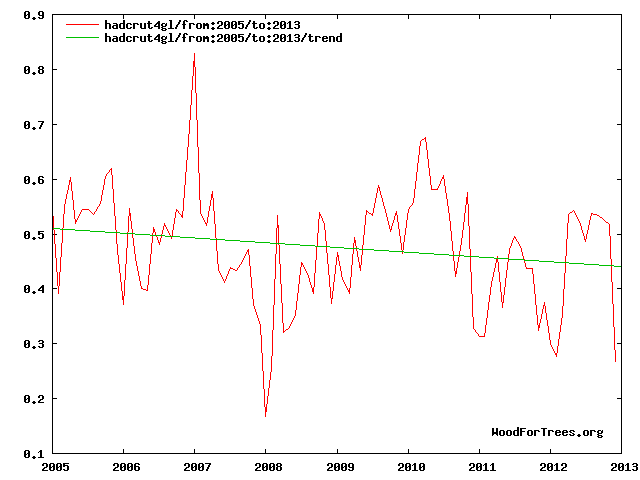
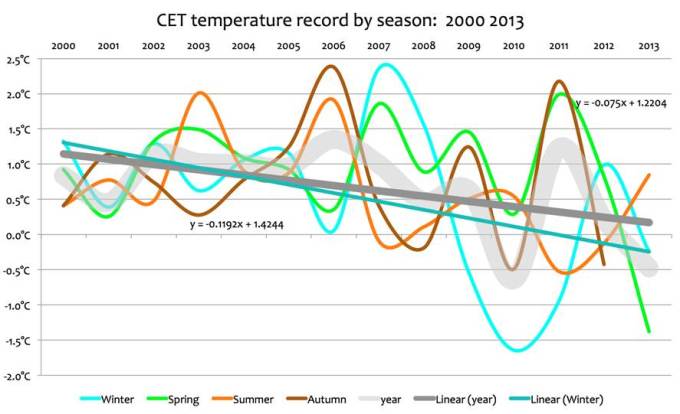
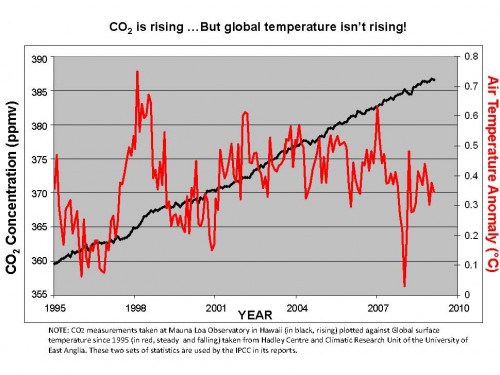
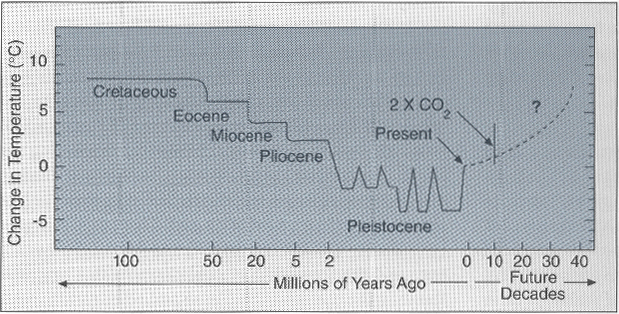
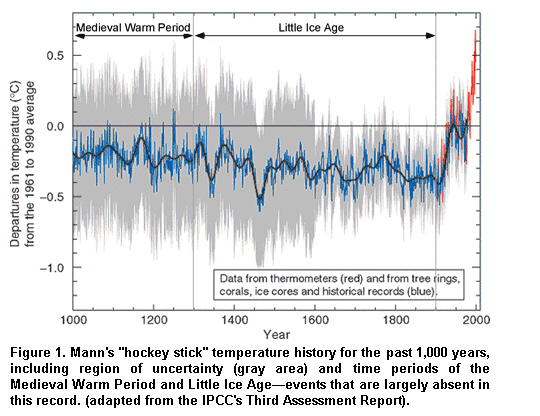
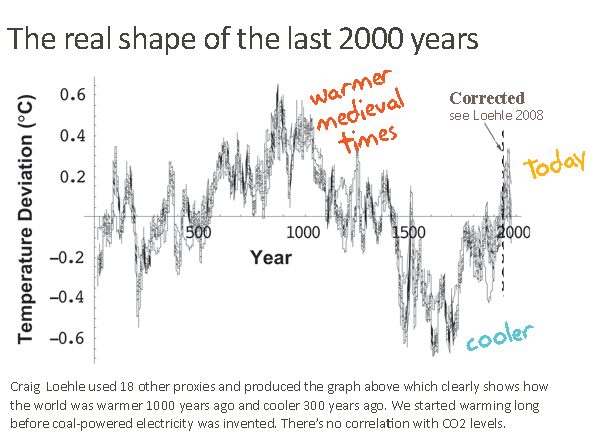

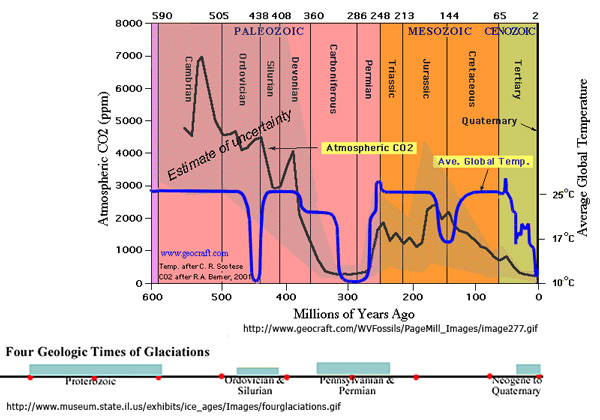
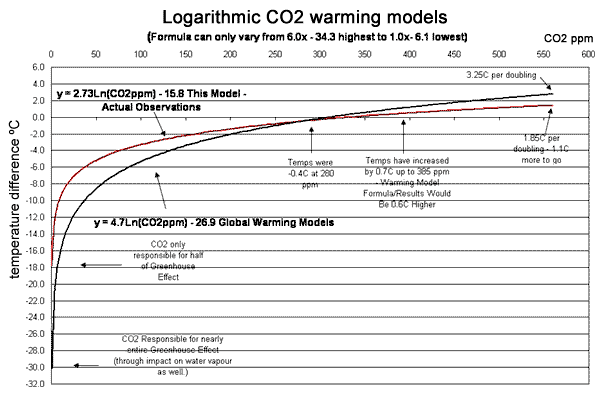
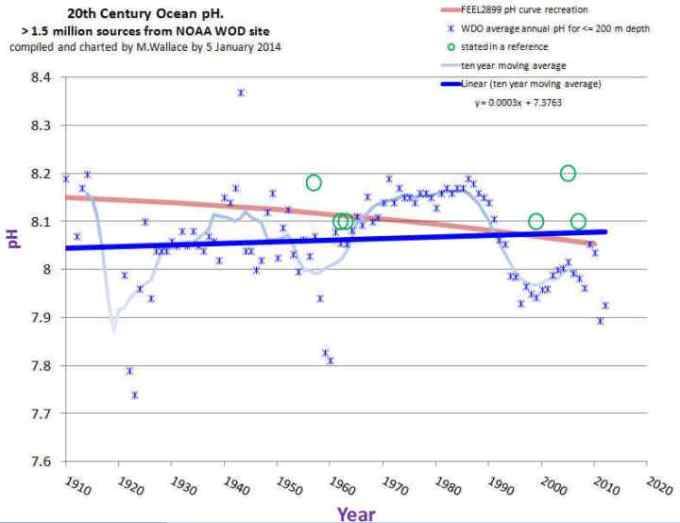
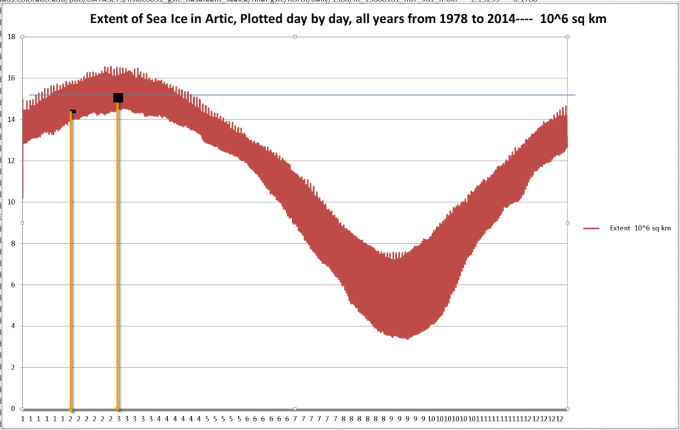
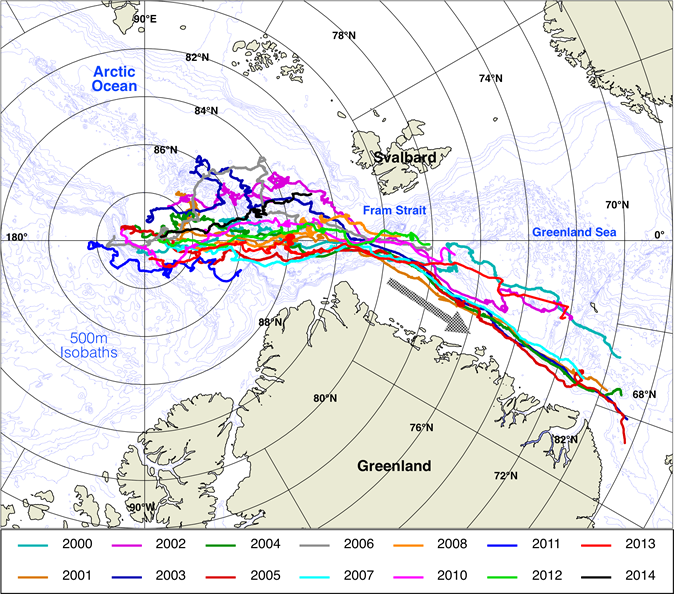

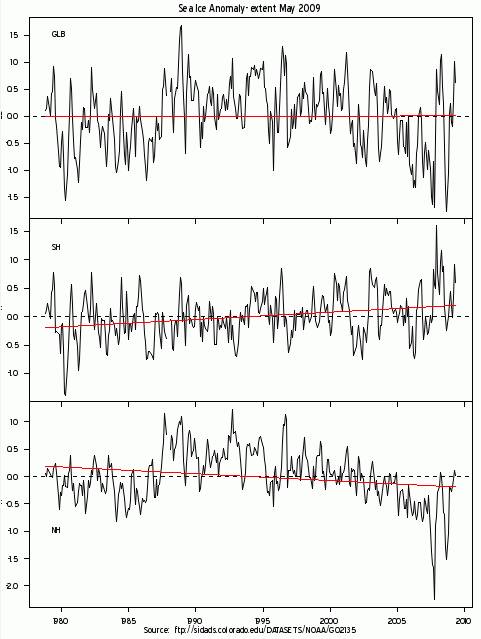


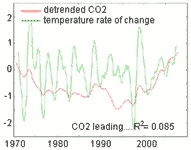
One thought on “Climate Change – Conservancy Or Governance?”
Comments are closed.